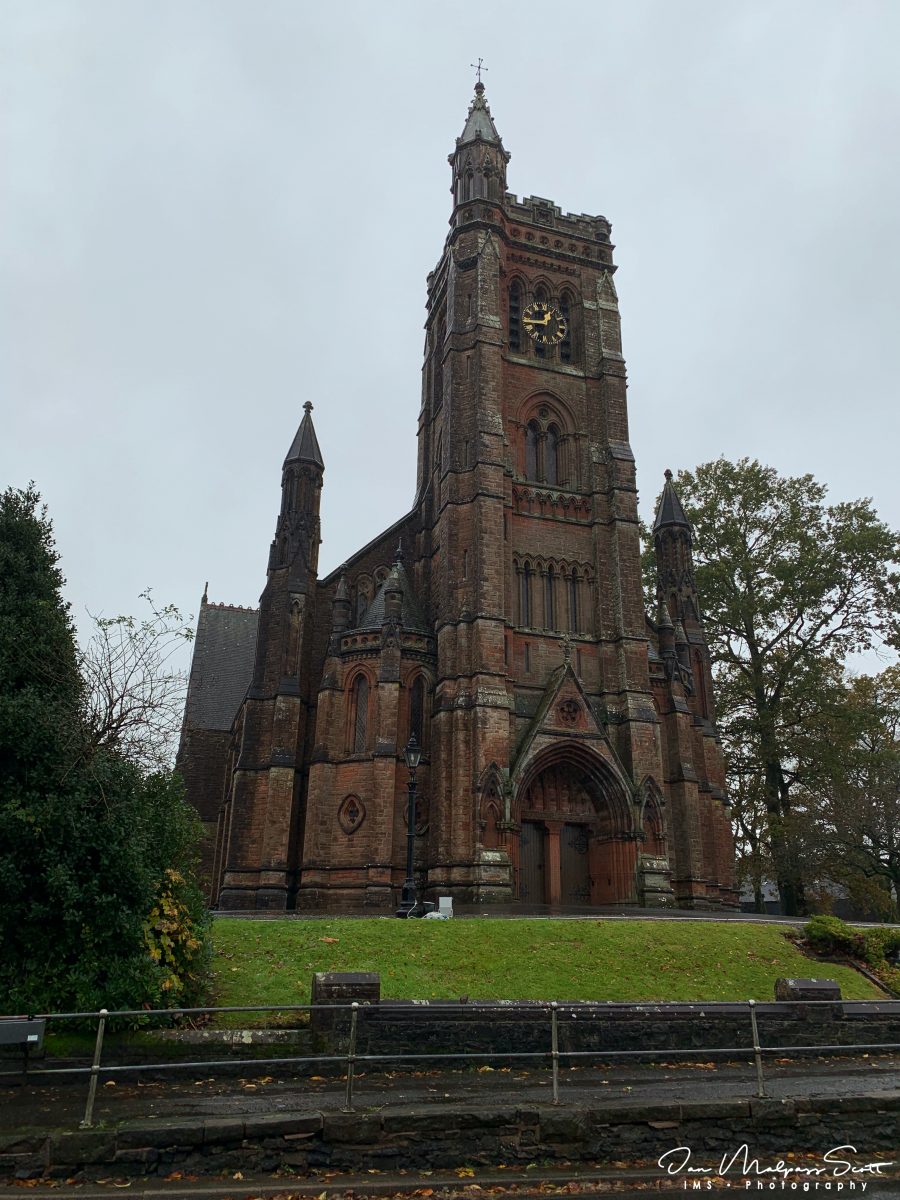In early Christian times there was a chapel at Auldton, the original Moffat. When the present Moffat came into existence the Parish Church, surrounded by a graveyard, was situated at the south-east of what is now the High Street. Little is known of this ancient church except that in 1177 it was transferred by Robert de Bruce to the Bishop of Glasgow, and was afterwards constituted, one of the prebends of the see. In the ‘Killing times’ it was put to the dolorous use as an overnight prison for Covenanters on their way to execution.
In 1790 the ground opposite the Black Bull Inn was gifted by James, Earl of Hopetoun, and a new parish church was built with seating for 1,000 persons. It had a spire at the top of which was affixed the Earl’s crest of the Flying Spur and, hence, was nicknamed the ‘Flying Spur Kirk’. […]
Ninety-seven years later the ‘Flying Spur Kirk’ was replaced by a new church, a little to the south of its predecessor. The first Service was held on the 23rd September, 1887, and it was dedicated to St. Andrew. At that time all the farms around Moffat on the Annandale Estate were occupied by Johnstones, so in the dedication to St. Andrew we see a change in taste as to what is right for God’s House.
The Church was built in the early English Gothic style of red sandstone from the Corncockle quarry. The architect was Mr. John Starforth, Edinburgh. The Church is of exceptionally fine construction, the materials and the workmanship, externally and internally, represent the best of a time when quality was at an apex. The doorway arches are finely carved and decorated, while some eighty sculptured heads from those on the archstops above the west door depicting angels to those of the gargoyle type on the turrets also adorn the building. The cost of church and manse, including furnishings and the laying out of the grounds, was £14,900. In 1932 a handsome clock with chimes was placed in the church tower as a gift from Mrs. Goldie Boag in memory of her husband who was the Minister of Tenandry in Perthshire. […]”
Ian A. Auld
![]()


